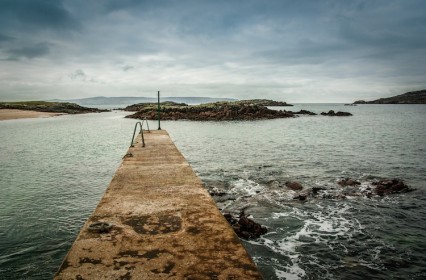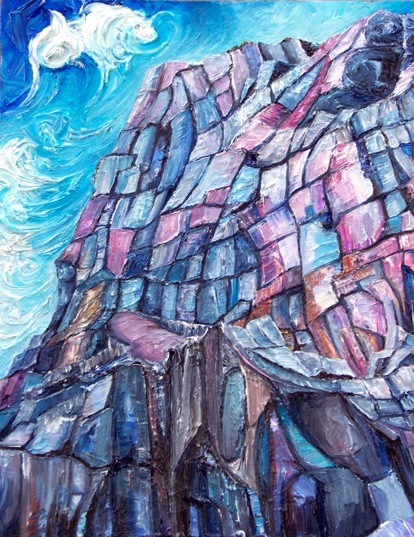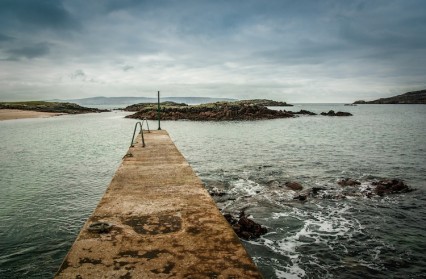Trey McCain is an American writer, videographer and language scholar, raised in Mississippi and currently residing in New Braunfels, Texas. His language studies at the University of Mississippi placed him in Paris where he developed a strong interest in minority languages and language rights movements. A cultural exchange visit to North Wales sparked a continuing love affair with Wales and the Welsh language. Below, McCain outlines his latest project – titled ‘No Heart without Language’, which aims to promote the Celtic languages and cultures in the US through art.

Many people in the U.S. have ideas about what ‘Celtic’ means, with shades and variations aplenty. Some see traditional music and dress or swirling patterns in stone. Others see the team currently holding the most NBA championships. For me, it once was synonymous with ‘Irish’ and ‘Scottish’ and conjured images of Hollywood-style battle scenes and murky pub songs. Wales changed that and gave me a new, linguistic framework for the word. I had already shown an affinity for language study at this point, but the Welsh language was entirely strange and otherworldly to me.
Language became my driving definition for Celtic. I also explored Breton, Cornish and the Gaelic languages in turn, though Welsh is the only one in which I have had sustained growth. I think that’s in large part due to the personal connection I have with the story of Wales and the people who are a part of it. For the past few years, I have been searching for ways to share my affection for Wales here in the U.S. I have volunteered with Welsh societies, joined Welsh practice groups and shared my story in a few different circles.
Despite these activities and a better command of Welsh, I still felt I should contribute more to help promote yr hen iaith. That is a common sentiment among learners abroad. We travel back every couple of years for a visit; perhaps for a language course at Nant Gwrtheyrn or a Say Something in Welsh boot camp. But what lasting, meaningful support can we offer? That powerlessness is felt most when we hear new census reports or anecdotes about every-day biases. In many ways, the Internet has given us a voice and a way to show our support, but we miss our pethau bychain, our chance to do the little things. To speak Welsh at the shop on the corner, at the library, in the café.

The fluidity of ‘celticness’ in America also muddies the waters somewhat. Finding more ways to promote Welsh culture and the Welsh language in the U.S. coincides with the similar need of the other Celtic languages and cultures to do the same. Part of shedding light on Wales is to do the same for Brittany, Cornwall, Ireland, the Isle of Man and Scotland. In January I launched a non-profit organisation – No Heart Without Language – in order to promote the Celtic languages and cultures in the U.S. through the medium of art. Our first project is a mobile gallery that will tour the U.S., showing the work of visual artists who are Celtic language speakers.
We want to bring art and language together because of the unique way in which both reveal new things to us. The capacity to discover new ideas through language is not unfamiliar to Welsh learners. Hiraeth – an expression signifying an abiding homesickness irrespective of place and time – is often trotted out as a unique feature of Welsh. However, there are more subtle examples that inhabit the very bones of language, creating a rising tide of different-ness. Rollin MacRae, an ecologist by trade and an Irish teacher by hobby, extolled the lowly preposition at St. Patrick’s Day festivities in Austin, Texas. Tá Gaeilge agam literally translates to ‘Irish is at me’ (or more loosely ‘I have Irish’) and signifies the ability to speak the language. Many prepositions in the Celtic languages are used in similar ways. For Rollin, it provides a new perspective into how we interact with people, ideas and the world around us.
In a similar way, art provides access to ideas and beliefs enshrouded in culture, by exploring inner meaning through image, sound and texture. We want to offer an authentic, modern mosaic of the distinct Celtic cultures and provide meaningful content for people interacting with the language for the first time. Few people are stimulated to engage a language unknown to them for the sheer pleasure of learning a new grammar or ‘decoding’ a previously inaccessible text. By providing input about Welsh culture and language through an artist’s perspective, we can help bridge that gap and give a voice to artists who want to share their work with an American audience.
Many artists throughout the Celtic nations have submitted their work, including photographers, painters and lino-printers from Wales. We have also seen a good response from festivals and gatherings here in the U.S. where we hope to bring the gallery. It is an exciting time for us, and we look forward to expanding what ‘Celtic’ means among our friends and neighbours.











